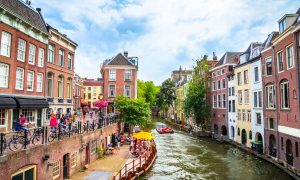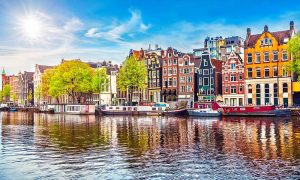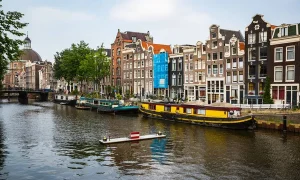As a country known for its high quality of life and social benefits, the Netherlands attracts numerousimmigrants. However, before immigrating to the Netherlands, it is vital to understand the local cost of living. In this article, we'll give you a full rundown ofImmigration to the NetherlandsIt also shares practical money-saving tips to help you better plan your life after immigration.
I. Overview of the cost of living in the Netherlands
According to the statistics for 2025, the cost of living in the Netherlands is in the middle to high range in Europe, with specific expenses varying by city and individual lifestyle. Below is a detailed analysis of the main expenditure items:
- Housing costs
Housing is the largest part of living expenses.- rents::
Rent prices in the Netherlands vary from city to city. Amsterdam is the most expensive city, with monthly rents for one-bedroom apartments averaging 1,200-1,800 euros, while in smaller cities such as Utrecht or Groningen rents can be as low as 700-1,200 euros. - buy a house::
If you plan to settle down for the long term, buying a home is an option. House prices in the Netherlands have continued to rise over the past few years, with the national average price in 2025 being around 4,000 euros per square meter, and even higher in major cities such as Amsterdam.
- rents::
- Transportation costs
- mass transit::
Public transportation in the Netherlands is well developed, with trains, metros and buses being the main means of travel. A monthly pass costs around 100-150 euros, depending on the area and route. - bicycles::
Holland is the kingdom of bicycles, and with a second-hand bike costing between 50-150 euros, it's the perfect way to save money on getting around.
- mass transit::
- Food and daily expenses
- Supermarket Shopping::
Monthly food expenses are usually between 200-400 euros. Common supermarkets include Albert Heijn, Jumbo and Lidl. Lidl is known for its affordable prices for those on a budget. - dine out::
A lunch in a regular restaurant is about 15 euros, and a three-course dinner in an upscale restaurant averages between 30 and 50 euros.
- Supermarket Shopping::
- medical insurance
The Netherlands has mandatory health insurance at an average cost of 120-150 euros per month, which covers basic medical services. Some insurance companies offer additional benefits, such as dental care and physiotherapy services, for an additional fee. - Education and Parenting
- Public schools are free of charge for immigrant families.
- Private and international school tuition fees range from 5,000-20,000 euros per year.
- Childcare is expensive, at around 800-1500 euros per month, but is subsidized by the government, depending on family income.
- Entertainment & Socialization
- Gym membership costs about 30-50 euros per month.
- Tickets to the movies cost 12-15 euros, and cultural events such as museums and concerts cost between 10-30 euros.
Second, the Netherlands cost of living to save money strategy
Although the cost of living in the Netherlands is not low, significant savings can be made on expenses through proper planning:
- Housing Savings Tips
- co-renting: If you are single or have no family, sharing a room can effectively reduce housing costs.
- Select Suburbs: The Netherlands is well served by public transportation, and rents are lower when you live on the edge of a city or in a smaller city.
- long term lease: Long-term leases with landlords can reduce rent fluctuations.
- Ways to save money on transportation
- Use of Public Transportation Discount Cards: If NS subscribes to the card, you can save up to $40% on a long commute.
- Bicycle priority: Buying a bike and sticking to it is not only economical but also environmentally friendly.
- Shopping & Dining
- Choosing Budget Supermarkets: such as Lidl and Aldi, offer lower prices on goods.
- bulk buying: Buying more bargains and storing them wisely can reduce the cost of frequent shopping.
- Reduce eating out: Cooking for yourself is not only healthier, but also significantly reduces dining expenses.
- Health insurance optimization
- Compare Insurance Plans: Choose a basic insurance plan that suits your needs without having to buy too many extra items.
- Application for medical assistance: Low-income families can apply for a government subsidy for health insurance, which provides a reduction of tens of euros per month.
- Education and childcare assistance
- Use of government subsidies: Apply for a child care subsidy to cover the cost of 70% or more.
- Choice of public schools: The quality is not inferior to that of private schools and is free of charge, making it suitable for immigrant families.
- Socializing & Entertainment
- Participation in free events: Many museums in the Netherlands have free admission on certain days.
- Purchase a membership card: such as the Museumkaart (annual museum card), which allows unlimited access to many museums across the country.
Three,Cost of living in the NetherlandsComparison: Amsterdam vs. other cities
The cost of living in Amsterdam is significantly higher than in other cities, especially in terms of housing and entertainment. Medium-sized cities, represented by Rotterdam and Eindhoven, offer more cost-effective options. For those with limited budgets, living in a small or medium-sized city or on the outskirts of a city may be prioritized.

IV. Is the high cost of living in the Netherlands worth it?
Despite the high cost of living in the Netherlands, its excellent welfare system, high-quality education and stable social environment provide migrants with a good livelihood. In particular, the high level of services in health care, education and public transportation makes immigrant families feel that they are getting value for money.

V. Summary
Immigration to the NetherlandsThe cost of living in the Netherlands is not unattainable, and it is possible to live a comfortable and affordable life in the Netherlands through sensible planning and scientific money-saving strategies. Whether it's choosing the right city to live in or optimizing your budget for everyday expenses, immigrant families can find the right balance for themselves.
The Netherlands has attracted countless immigrants with its multiculturalism, high quality of life and open society. If you are planning a new life in the Netherlands, we hope that this article will provide you with practical references to help you start your new life easily!Overseas ImmigrationJourney!






